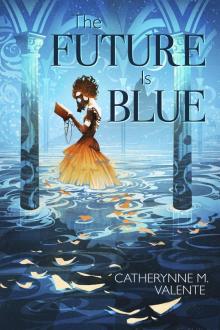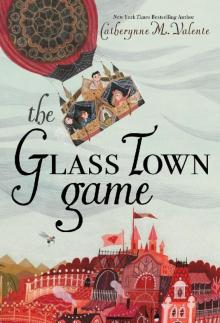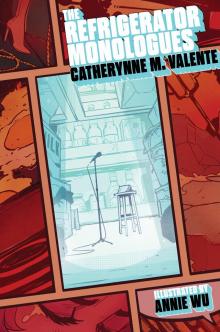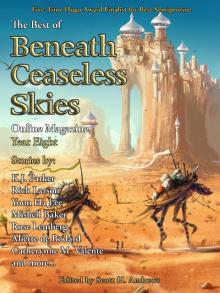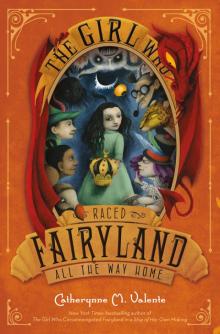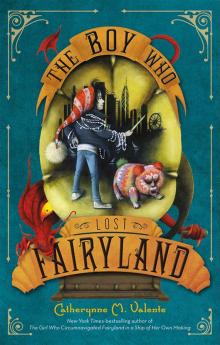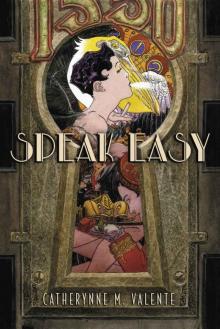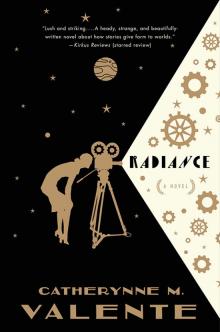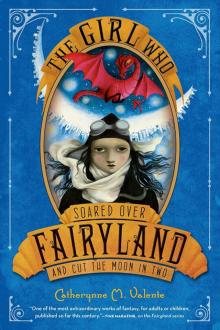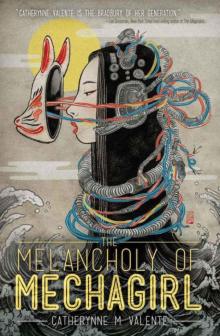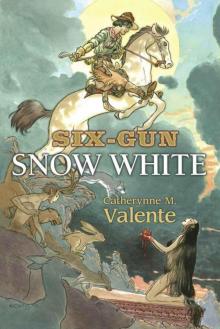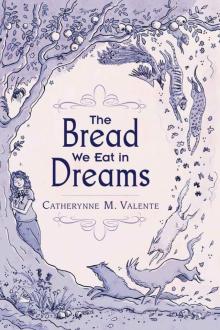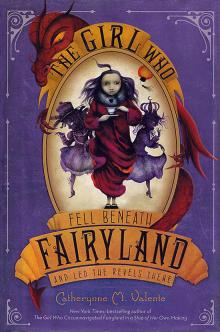


You Can't Get Lost in Cape Town, Page 2
Zoe Wicomb
When in 1983 a new Tricameral Parliament provided for a separate chamber where coloureds would legislate on their “own affairs,” several parties offered candidates. The strongest was the Labour Party, essentially the voice of the most skilled and organized coloured labor unions. Coloured voters stayed away from the polls in these elections, which extended franchise to coloured and Indian voters but excluded Africans. Many coloured voters were made aware by the active campaign of the United Democratic Front (UDF) of the falsity of democracy when racial segregation remained intact.11
Frieda returns from Britain after a twelve-year absence still politically naïve, as are most of her friends (with the exception of her friend Moira) and certainly her family, who are still defined by their localities and histories in South Africa. She encounters once again the depth of coloured acquiescence.
Wicomb published this book originally in 1987, three years before the end of apartheid, while state violence and insurrection were at a height. Close readers of You Can’t Get Lost in Cape Town at that time would have been cautioned and perhaps less surprised than many political observers when, in the months before the 1994 general elections, the coloured voters moved from “undecided” to support of the National Party, which courted them as part of an enlarged constituency of Afrikaans-speakers. They delivered the Western Cape provincial government to the old Afrikaner ruling party, while in most other provinces the African National Congress swept the elections. Peter Marais, one of the victorious candidates, wrote of his personal sense of identity:
My language, Afrikaans, provides the first indication of where I am located because many things flow from language. My religious affiliation is another feature of my identity. . . . As a bruin man (brown man) of Griqua and Afrikaner descent, I do not wish to have another “bruin man” telling who I am; or that I am nothing. On the contrary, I am something. I am a Griqua with Afrikaner blood.12
It is apparent from such a testimony that Griqua in the new South Africa was becoming an ethnicity around which to mobilize. The eventual political alliance of Griqua cultural chauvinists, however, is not a foregone conclusion. In the last chapter of the novel, Wicomb dramatizes this shift in perspective; the Griqua suddenly enjoy a more positive valence. Wicomb questions the politics of ethnicity as much as the rigid racism of apartheid.
RESPECTABILITY AND COLOR
At the heart of the ambiguity for coloured peoples are the implications of their mixed ancestry and two sorts of prejudice: prejudice against them because of color and prejudice against such women in particular as (presumptively) available for sexual liaisons. These markers are inflected differently across time and circumstance.
Mixing in the seventeenth century occasionally involved visible and highly placed persons. Detailed examinations are now being made of the life of the late-seventeenth century Khoikhoi woman Eva, the protégé of and interpreter for the first Dutch governor, wife of a company official, and, finally, a mother in reduced circumstances. Her Khoi name, Krotoa, is adopted by those who promote her as the foremother of the new South Africa.13 In the seventeenth and eighteenth centuries, some other marriages between white men and Khoi or coloured women were solemnized in church. A few descendants of these marriages became citizens, burghers, with full civil rights.14 For example, among the leadership in colonial coloured resistance was the Reverend James Read, Jr., the son of a London Missionary Society missionary and a Khoi-descended woman.15
That the Dutch East India Company imported and owned slave retainers whom it housed collectively in Cape Town, however, created a very different situation. Cape Town has been called “the tavern of the two seas,” the port where vessels bound for or returning from the Far East called for provisions and respite. The slave lodge became a place to find partners in casual sex and children were born with anonymous fathers, some of them European sailors. Toward the end of the eighteenth century, German soldiers brought in as mercenaries by the Dutch East India Company added to the mixture by making country marriages. By the time the British took over the Cape Colony in 1808, “free people of colour” were of many shades. There were a number of slaves of mixed parentage, and increasing ambiguity as to whether the “tame Hottentots”—Khoi within colonial society or grouped around mission stations—were melting into the same category. With the abolition of slavery and other degrees of formal servitude, the process of acculturation accelerated. In the Cape Colony, the civil rights of free people were equal. Contracts between masters and servants, however, put the servant in a weak position. And most coloureds were servants. On farms, with arrangements dating from the days of slavery, the domestic privacy of laborers’ families was minimal. The Cape Marriage Order of 1839 provided for the regularization of marriage and induced a flow of couples to the churches.16
An example of deep prejudice within colonial society has been given by Pamela Scully through the case of Anna Simpson, the wife of a laborer who in April 1850 brought rape charges before the circuit court. The defendant confessed and was sentenced to death, only to have the sentence commuted because of white citizens’ protests that Anna Simpson was coloured: “The woman and her husband are Bastard coloured persons, and that instead of her being a respectable woman, her character for chastity was very indifferent.”17 On the score of respectability, in the eyes of white moralizers, women of color were lacking unless proven otherwise.
The impoverishment of the majority of those considered to be coloured resulted from their lack of capital and ability to secure and retain land, their indebtedness, and the failure of wages to rise in real terms. It has been reckoned that pay for coloured workers did not improve relative to the cost of living between the 1840s and the interwar period.18 There may have been some real increases in the 1940s and 1950s, but they were stalled and reversed as the full effects of apartheid took hold. Coloured wages declined steeply relative to white wages. Declining real wages affected women as well as men in the formal economy; women had to work ever harder, by whatever means, to meet their household needs. The attitude of the canteen worker Tamieta at the University of the Western Cape in “A Clearing in the Bush” reflects many women’s aversion to the risk of lost employment, as well as compromises of respectability.
The Population Registration Act was one of the most painful measures for coloureds. Each person had to carry an identity card declaring her or his race category. Entitlement to educational facilities, to residential areas, to employment, to association all followed. When the Population Registration rubrics were dictated, “Coloured” subcategories distinguished “Cape Coloured,” “Cape Malay” (Muslims), “Griqua,” and “other Coloured.”19 These reflected potential fault lines to exploit in a policy of divide and rule. But the overarching categories “Coloured,” “European”(or “White”), “Bantu” (African), and “Asian” (or “Indian”) served as racial cyphers for juridical purposes. Members of the same families received different racial classifications. Assignments could be altered each year, unilaterally by officials or following appeal. In 1970, for example, the Ministry of Interior unilaterally reclassified seven persons from “Coloured” to “Bantu,” and acted favorably on petitions in twenty-two cases to be changed from “White” to Coloured,” twenty-three from “Coloured” to “White,” and fourteen from “Bantu” to “Coloured.” Race Classification Boards reclassified one “White” to “Coloured,” four “Coloured” to “White,” and twenty-nine from “Bantu” to “Coloured.” The report does not specify where in South Africa these persons resided.20 From Wicomb’s writing, readers will appreciate that consciousness of race and cultural status was sharply registered within the ranks of coloureds. Mrs. Shenton’s ironic reference to the chauffeur’s possible legal status as a “registered Coloured” bespeaks her uncertainty over the identity of the apparently white driver (4).
A case that drew great attention to the excruciating consequences of population registration was that of Sandra Laing. Laing was the daughter of poor but “respectable” whites, whose features di
d not conform to the Caucasian model. She was dismissed from her white school and reclassified “Coloured” by officials. On protest and following a court case, she was reclassified “White,” but never again settled into her privileged entitlements. She finally married an African.21
These notes will have underscored the irony of Wicomb’s title. You Can’t Get Lost in Cape Town comes from a confident statement by Frieda’s longstanding white boyfriend as she is about to go off to have an abortion in the white part of the city. Frieda Shenton, for her part, does not have a sense of direction, even though she ends up in the clinic and is able to deny that she is coloured in order to have the procedure. What is wonderful about this character is her unwillingness to follow in the tracks of others, her observance of the humanity of her own extended family and members of Namaqualand society regardless of her mother’s indoctrination and projection of them as dangerous, throwbacks to poor, uncultured antecedents. The important reconciliation that appears at the book’s end reminds us most tellingly of a general point of the work—that rehearsed, constraining histories can be transcended, at least momentarily.
Marcia Wright
New York
December 1999
NOTES
1. Coloured, a term referring to mixed-race individuals in South Africa, is discussed with more texture later in this introduction. In the context material for this edition of You Can’t Get Lost in Cape Town, coloured appears, for the most part, without quotation marks and an initial capital. Cape Coloured has been capitalized as a historical marker; similarly, when the term denotes the specific apartheid classification named in the Population Registration Act of 1950, it appears with an initial capital and in quotations. In an essay on shame and identity, Zoë Wicomb briefly comments on the changing use of the term coloured, especially with respect to apartheid and liberation politics. She writes, “Such adoption of different names [i.e., black, “Coloured,” Coloured, etc.] at various historical junctures shows perhaps the difficulty that the term coloured has in taking on a fixed meaning, and as such exemplifies postmodernity in its shifting allegiances, its duplicitous play between the written capitalization and speech that denies or at least does not reveal the act of renaming” (“Shame and Identity: The Case of the Coloured in South Africa,” in Writing South Africa: Literature, Apartheid, and Democracy, 1970–1995, ed. Derek Attridge and Rosemary Jolly [New York: Cambridge University Press, 1998], 93–94).
2. Griqua, an ethnicity among coloured South Africans, is a designation and political identity treated later in this introduction.
3. J. S. Marais, The Cape Coloured People, 1652–1937 (1939; reprint, Johannesburg: Witwatersrand University Press, 1968), chap. 3. The other classic study is W. M. Macmillan, The Cape Colour Question: A Historical Survey (1927; reprint, London: Hurst, 1968).
4. Martin Legassick, “The Northern Frontier to c. 1840: The Rise and Decline of the Griqua People,” in The Shaping of South African Society, 1652–1840, ed. Richard Elphick and Hermann Giliomee, 2d ed. (Middletown: Wesleyan University Press, 1989), 382. Such distillations of one trace element from a number of sources (in this case, the naming of a common ancestral link) is, of course, part of ethnicity-building, as a vigorous literature on the invention of tradition makes clear.
5. Marais, Cape Coloured, 85. Poppie Nongena is a poignant example of an acculturated, Afrikaans-speaking woman of the Western Cape; see Elsa Joubert, Poppie Nongena (New York: W. W. Norton, 1985).
6. Thomas G. Karis and Gail M. Gerhart, introduction to Challenge and Violence, 1953–1990, vol. 3, From Protest to Challenge: A Documentary History of African Politics in South Africa, 1882–1964, ed. Thomas G. Karis and Gwendolyn M. Carter (Stanford: Hoover Press, 1977), 10–11.
7. A Western Cape woman who married a “Bantustan” citizen from the Eastern Cape lost her rights of residence. This situation is powerfully reflected in Joubert’s Poppie Nongena. The account of Poppie’s experiences working in fish processing factories on the west coast of the Cape Province, not far from the interior of Little Namaqualand, opens the opportunity for reflection on underclass women’s lives as compared with the aspirant, precarious middle class explored by Wicomb.
8. Elaine Unterhalter, Forced Removal: The Division, Segregation and Control of the People of South Africa (London: International Defence and Aid Fund, 1987), 146.
9. Thomas G. Karis and Gail M. Gerhart, eds., Nadir and Resurgence, 1964–1979, vol. 5, From Protest to Challenge: A Documentary History of African Politics in South Africa, 1882–1990, ed. Thomas G. Karis and Gail M. Gerhart (Bloomington: University of Indiana Press, 1997), 525.
10. Ibid., 103.
11. Bill Nasson, “Political Ideologies in the Western Cape,” in All, Here, and Now: Black Politics in South Africa in the 1980s, ed. Tom Lodge, Bill Nasson, Steven Mufson, Khenla Shubane, and Nokwanda Sithole (New York: Ford Foundation, 1991).
12. Peter Marais, “Too Long in the Twilight,” in Now That We Are Free: Coloured Communities in a Democratic South Africa, ed. Wilmot James, Daria Caliguire, and Kerry Cullinan (Boulder: Lynne Rienner, 1996), 60.
13. See, for example, Julia Wells, “Eva’s Men: Gender and Power in the Establishment of the Cape of Good Hope, 1652–74,” Journal of African History 30(1998): 417–37, and Yvette Abrahams, “Was Eva Raped? An Exercise in Speculative History,” and Christina Landman, “The Religious Krotoa (c. 1642–1674),” Kronos: Journal of Cape History 23: 3–21, 22–35.
14. Richard Elphick and Robert Shell, “Intergroup Relations: Khoikhoi, Settlers, Slaves and Free Blacks, 1652–1795,” chap. 4 in The Shaping of South African Society, 1652–1840, ed. Richard Elphick and Hermann Giliomee, 2d ed. (Middletown, Conn.: Wesleyan University Press, 1989).
15. Timothy Keegan, Colonial South Africa and the Origins of the Racial Order (Charlottesville: University of Virginia, 1996), 238. See also Robert Ross, “Missions, Respectability and Civil Rights: The Cape Colony, 1828–1854,” Journal of Southern African Studies 25 (September 1999): 333–45.
16. Pamela Scully, Liberating the Family? Gender and British Slave Emancipation in the Rural Western Cape, South Africa, 1823–1853 (Portsmouth: Heinemann, 1997), 116, 127–28.
17. As quoted in Scully, Liberating, 155–56.
18. Marais, Cape Coloured, 266.
19. Apartheid: The Facts (London: International Defense and Aid Fund, 1983), 16. The original default category “Coloured” also included “Indian,” “Chinese,” and “other Asiatic.”
20. Muriel Horrell, et al., comp., A Survey of Race Relations in South Africa 1971, vol. 25 (Johannesburg: Institute of Race Relations, 1972), 60.
21. W. A. de Klerk, The Puritans in Africa: A Story of Afrikanerdom (London: Rex Collings, 1975), 268–70. De Klerk, a maverick Cape Afrikaner writer, criticizes the apartheid regime and makes a major point of the case of Sandra Laing as one evidence of the absurdity of the system. A docudrama, The Search for Sandra Laing (video: 50 minutes, color, ATV production in affiliation with the African National Congress, 1978; distributed by IDERA, Canada), provides a searing reenactment of the story.
YOU CAN’T GET LOST IN CAPE TOWN
Origins trouble the voyager much, those roots
that have sipped the waters of another continent . . .
it is solitude that mutilates,
the night bulb that reveals ash on my sleeve.
ARTHUR NORTJE
Don’t travel beyond
Acton at noon in the intimate summer light of England
ARTHUR NORTJE
In writing the history of unfashionable families one is apt to fall into a tone of emphasis which is very far from being the tone of good society, where principles and beliefs are not only of an extremely moderate kind, but are always presupposed, no subjects being eligible but such as can be touched with a light and graceful irony.
GEORGE ELIOT, The Mill on the Floss
BOWL LIKE HOLE
At first Mr Weedon came like any white man in a motor car, enquiring about sheep or goats or
servants.
A vehicle swerving meteor-bright across the veld signalled a break in the school day as rows of children scuttled out to hide behind the corner, their fingers plugged into their nostrils with wonder and admiration. They examined the tracks of the car or craned their necks in turn to catch a glimpse of the visitor even though all white men looked exactly the same. Others exploited the break to find circuitous routes to the bank of squat ghanna bushes where they emptied their bowels and bladders. On such occasions they did not examine each other’s genitals. They peered through the scant foliage to admire the shiny vehicle from a safe distance. They brushed against the bushes, competing to see, so that the shrivelled little leaf-balls twisted and showered into dust. From this vantage point they would sit, pants down, for the entire visit while the visitor conducted his business from the magnificence of his car.
At an early age I discovered the advantage of curling up motionless in moments of confusion, a position which in further education I found to be foetal. On these topsy-turvy days I crept at great risk of being spotted to the kitchen which jutted out at a near ninety degrees of mud-brick wall from the school building. Under the narrow rectangular table I lay very still. The flutter inside subsided the instant I drew my knees up and became part of the arrangement of objects, shared in the solidity of the table and the cast-iron buckets full of water lined up on it. I could depend on Mamma being too absorbed by the event to notice me. Or if she did, she would not shout while the car squinted at the kitchen door.
So under the kitchen table I invariably found myself when vehicles arrived. And at first Mr Weedon arrived like any other white man enquiring about sheep or goats or servants.

